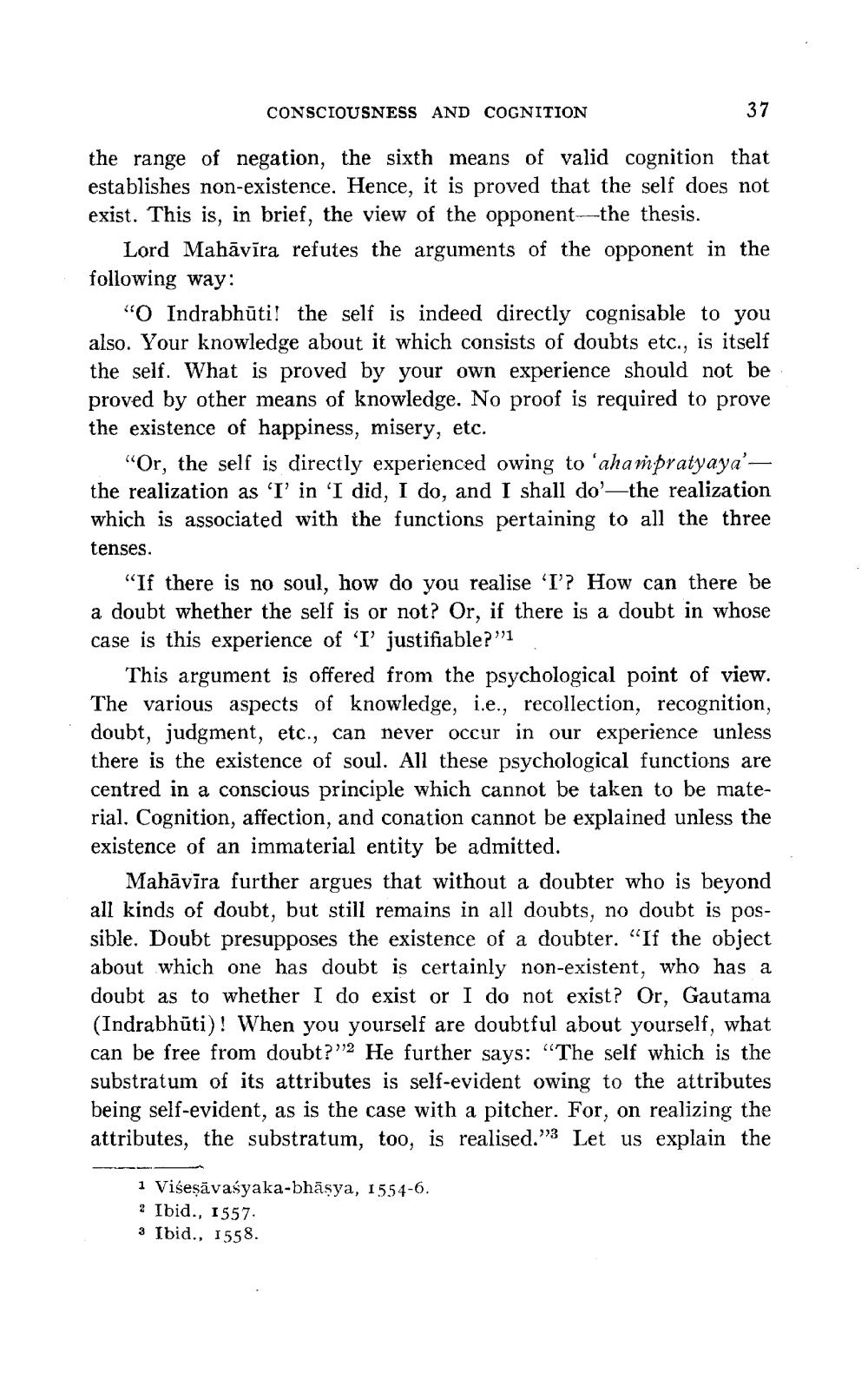________________
CONSCIOUSNESS AND COGNITION
37
the range of negation, the sixth means of valid cognition that establishes non-existence. Hence, it is proved that the self does not exist. This is, in brief, the view of the opponent-the thesis.
Lord Mahāvīra refutes the arguments of the opponent in the following way:
"O Indrabhūti! the self is indeed directly cognisable to you also. Your knowledge about it which consists of doubts etc., is itself the self. What is proved by your own experience should not be proved by other means of knowledge. No proof is required to prove the existence of happiness, misery, etc.
"Or, the self is directly experienced owing to 'ahampratyaya'the realization as 'I' in 'I did, I do, and I shall do'-the realization which is associated with the functions pertaining to all the three
tenses.
"If there is no soul, how do you realise 'I'? How can there be a doubt whether the self is or not? Or, if there is a doubt in whose case is this experience of 'I' justifiable?"1
This argument is offered from the psychological point of view. The various aspects of knowledge, i.e., recollection, recognition, doubt, judgment, etc., can never occur in our experience unless there is the existence of soul. All these psychological functions are centred in a conscious principle which cannot be taken to be material. Cognition, affection, and conation cannot be explained unless the existence of an immaterial entity be admitted.
Mahāvīra further argues that without a doubter who is beyond all kinds of doubt, but still remains in all doubts, no doubt is possible. Doubt presupposes the existence of a doubter. "If the object about which one has doubt is certainly non-existent, who has a doubt as to whether I do exist or I do not exist? Or, Gautama (Indrabhūti)! When you yourself are doubtful about yourself, what can be free from doubt?" He further says: "The self which is the substratum of its attributes is self-evident owing to the attributes being self-evident, as is the case with a pitcher. For, on realizing the attributes, the substratum, too, is realised." Let us explain the
1 Viseṣāvasyaka-bhāṣya, 1554-6.
2 Ibid., 1557
3 Ibid., 1558.




